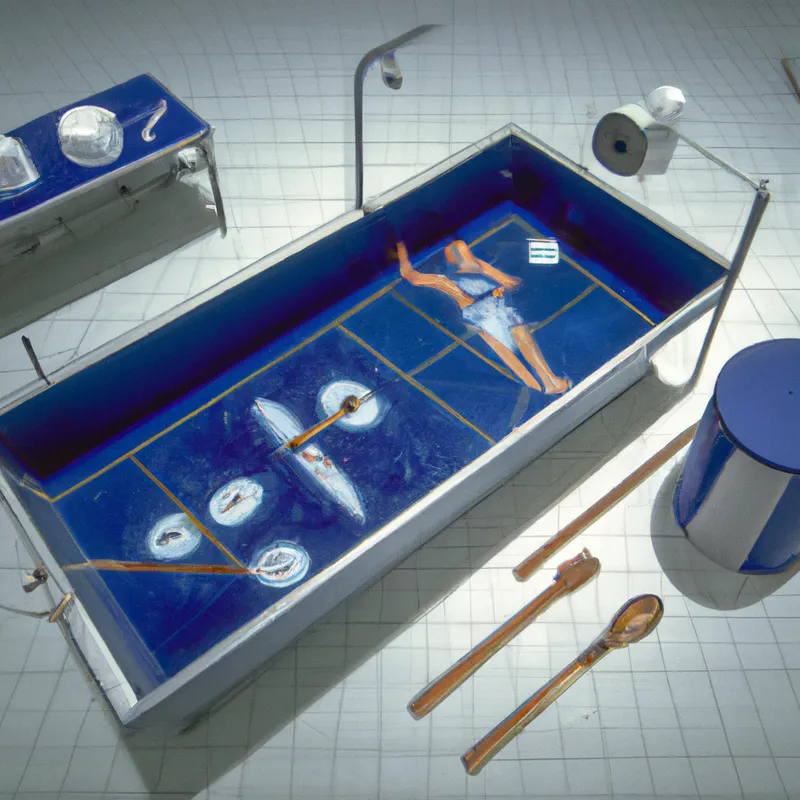Revolutionize Recovery: Embrace Ice Baths Today
Exploring the Use of Ice Baths in Professional Sports
Professional athletes now rely on ice baths for recovery. As sports evolve, athletes adopt new methods to enhance performance and recovery. Ice baths, or cold water immersion, provide crucial benefits for athletes in high-intensity sports. This blog post explores ice baths’ science, advantages, effective use, and important considerations.
The Science Behind Ice Baths
Ice baths utilize cold therapy or cryotherapy principles. When athletes immerse in cold water, their body temperature drops, triggering physiological responses. Rapid cooling constricts blood vessels and reduces blood flow to muscles. This vasoconstriction limits swelling and inflammation. The cold also numbs nerve endings, decreasing pain perception and allowing more comfortable recovery after strenuous activities.
Research shows that ice baths significantly improve recovery times after intense training. A study in the *Journal of Sports Sciences* found that athletes using ice baths reported less muscle soreness than those who did not. Many professional teams and athletes, from football to track, now include this method in their recovery protocols to prepare for competitions and maintain peak performance.
How to Use Ice Baths Effectively
Athletes can maximize ice bath benefits with planning and attention to detail. Consider these essential tips for effective integration into recovery routines:
1. **Timing is Key**: Use ice baths immediately after intense workouts or competitions to reduce muscle soreness and inflammation.
2. **Duration Matters**: Limit your ice bath to 10-15 minutes. Staying in longer may reduce muscle function and increase discomfort.
3. **Temperature Control**: Aim for water temperatures between 50°F and 59°F (10°C to 15°C) for optimal benefits without excessive discomfort or hypothermia risks.
4. **Stay Hydrated**: Cold exposure can lead to dehydration, hindering recovery. Drink water before and after the ice bath to maintain hydration.
Preparing for an Ice Bath
Preparation enhances your ice bath experience and results. Follow these additional tips to ensure readiness:
1. **Warm Up First**: Engage in light warm-up activities, like stretching or jogging, before entering the ice bath. Warming up increases blood flow and eases the transition to cold.
2. **Mental Readiness**: Ice baths can shock the system. Mentally prepare for the initial cold sensation by focusing on your breathing.
Conclusion
Ice baths offer valuable recovery benefits for athletes. Proper use and preparation enhance their effectiveness, promoting faster recovery and better performance.
Below are related products based on this post:
FAQ
What are the primary benefits of ice baths for athletes?
Ice baths provide crucial recovery benefits, including reduced muscle soreness, decreased inflammation, and improved overall recovery times after intense workouts. By constricting blood vessels and numbing nerve endings, they help athletes recover more comfortably and effectively.
How long should an athlete stay in an ice bath for optimal results?
Athletes should limit their time in an ice bath to 10-15 minutes. Staying in longer can reduce muscle function and increase discomfort, making it essential to stick to this recommended duration for the best recovery outcomes.
What precautions should athletes take before using an ice bath?
Before using an ice bath, athletes should warm up with light activities, such as stretching or jogging, to increase blood flow. Additionally, mental preparation is important to help ease the transition into the cold water, allowing for a more effective recovery experience.















Post Comment